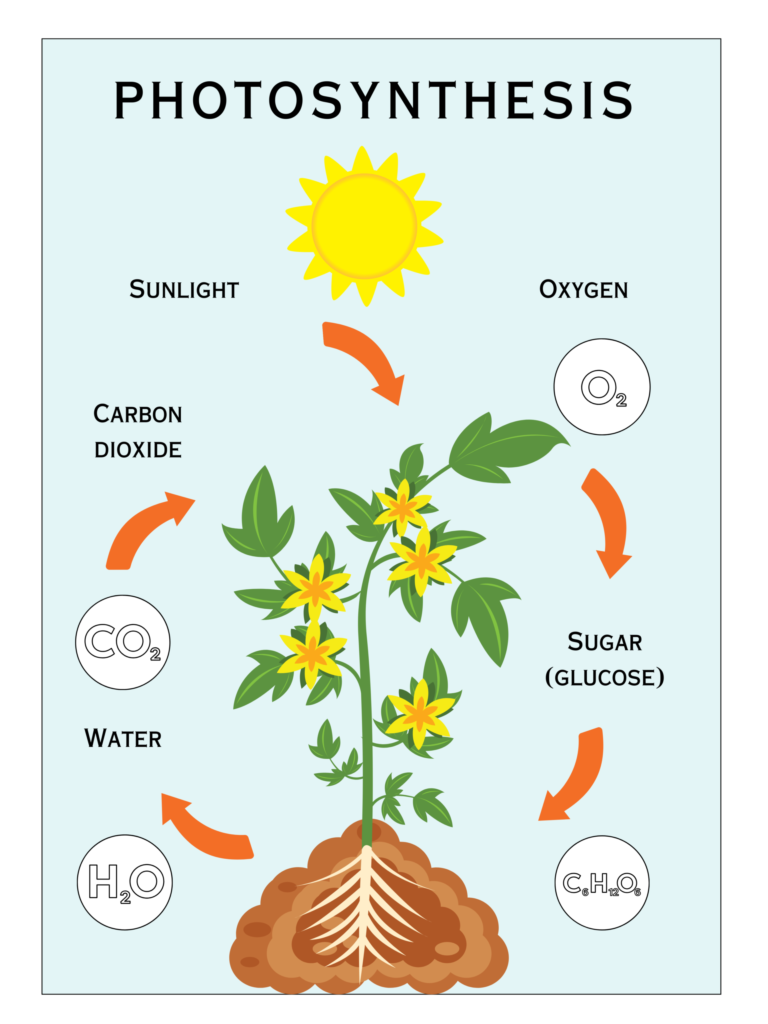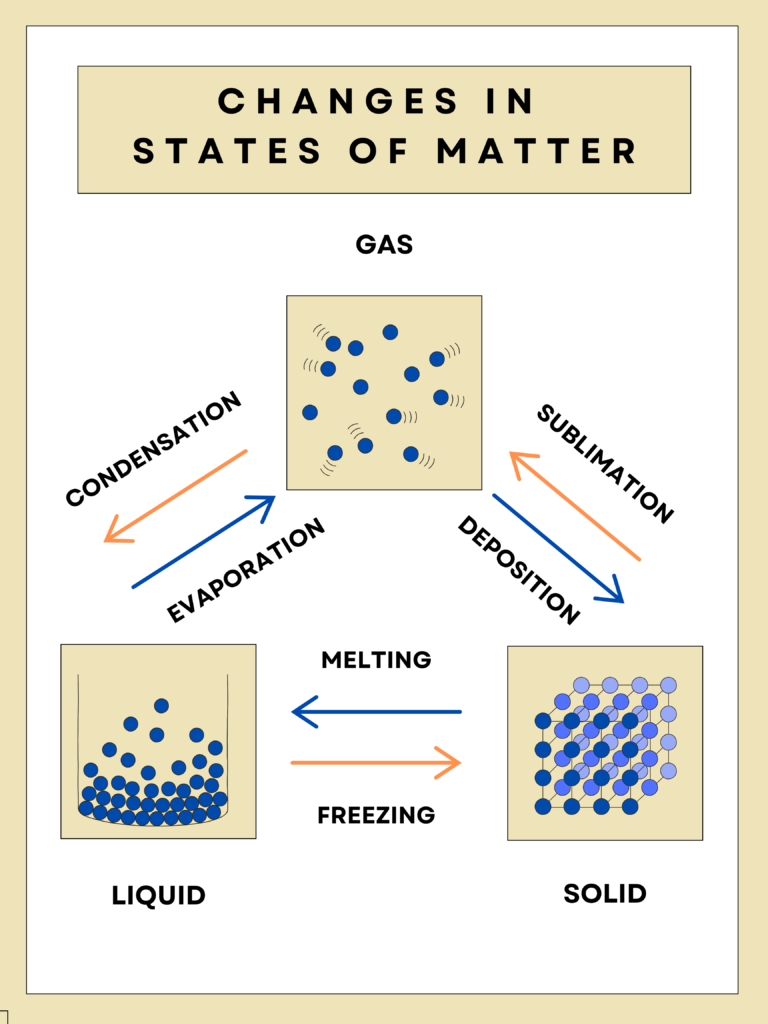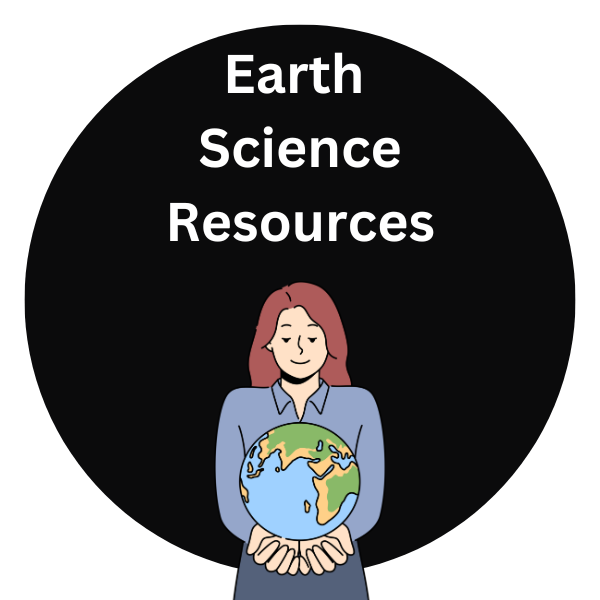Science rubrics for the homeschool classroom offer many benefits.
Homeschooling offers the flexibility to suit education to a child’s unique needs and interests, and science is one subject that benefits immensely from a personalized, hands-on approach. However, assessing student performance, especially in non-traditional formats like presentations, can be challenging for homeschooling parents.
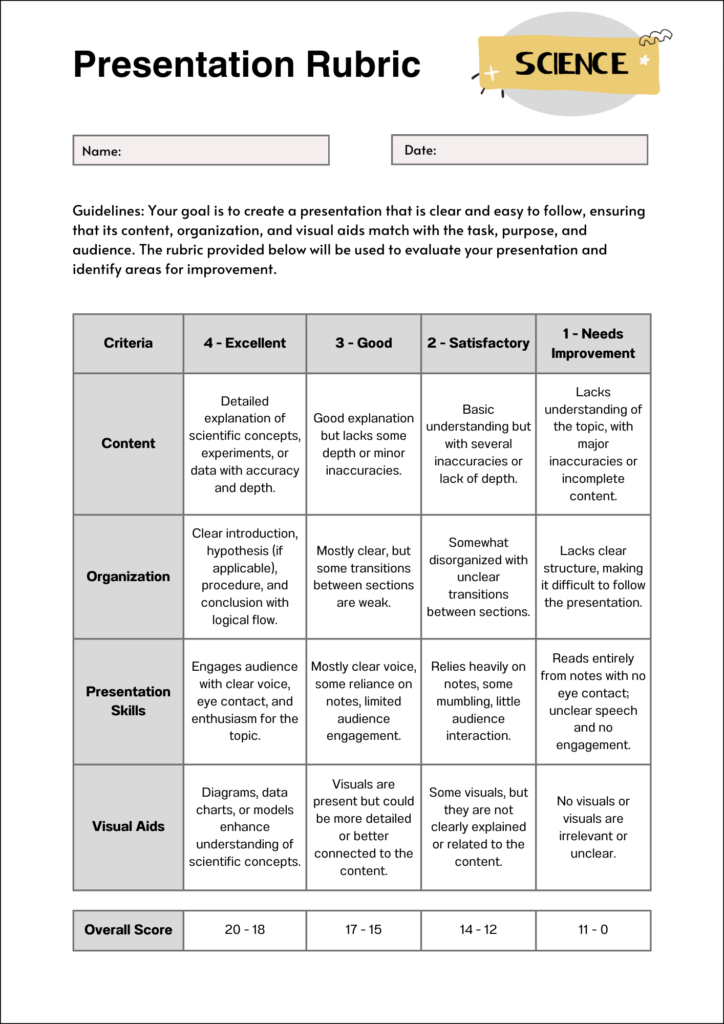
This is where presentation style rubrics become a valuable tool, offering clear criteria for both students and educators to guide the learning process.
Click to view our science presentation rubrics, or on the image below to gain access to our ready to use rubric for the science classroom. This rubric highlights the levels by which science prensentations will be measured and provides a numeric value to each of the level.
Why Use Science Rubrics in the Homeschool Classroom?
And now here’s how rubrics can transform presentations in the homeschool science classroom.
1. Clarifying Expectations and Reducing Anxiety
For many homeschool students, giving presentations—whether it’s on the life cycle of a frog or the solar system—can feel overwhelming. The uncertainty of not knowing exactly how they will be evaluated may lead to anxiety. A presentation style rubric solves this issue by providing clear expectations.

With a well-defined rubric, students know precisely what aspects of their presentation will be graded, such as content accuracy, organization, use of visuals, and delivery. This clarity allows students to focus on their research and preparation, knowing exactly how to meet the requirements of the assignment. As a result, they approach presentations with more confidence and less stress.
2. Fostering Independence and Self-Directed Learning
One of the hallmarks of homeschooling is encouraging students to take ownership of their education. Rubrics play a key role in fostering this independence by offering students a clear framework to self-assess their work. Before delivering a science presentation on photosynthesis or changes in states of matter, for example, students can use the rubric to ensure they’ve covered all necessary components—from the depth of content to the quality of visual aids.
Check out our resources available to help with science presentations available on our Canva library of products.
This promotes critical thinking and self-directed learning, as students can evaluate their own performance before presenting. They become more mindful of areas they need to improve, such as explaining their findings clearly or using more effective visuals to support their scientific claims.
3. Encouraging Mastery of Scientific Concepts
The core of any science presentation is the student’s understanding of the material. In a homeschool environment, it’s crucial that students can explain scientific concepts clearly and accurately. A rubric helps ensure that the focus of their presentation remains on content mastery.
Click on the images below to see some of our category specific resources to help inspire or reinforce scientific concepts.
For example, if a student is presenting on the solar system, the rubric might assess their understanding of each planet’s characteristics, the ability to explain the gravitational forces at work, and how well they can connect their presentation to real-world phenomena. The rubric provides an organized way to measure content knowledge, ensuring that students not only memorize facts but also understand the bigger picture.
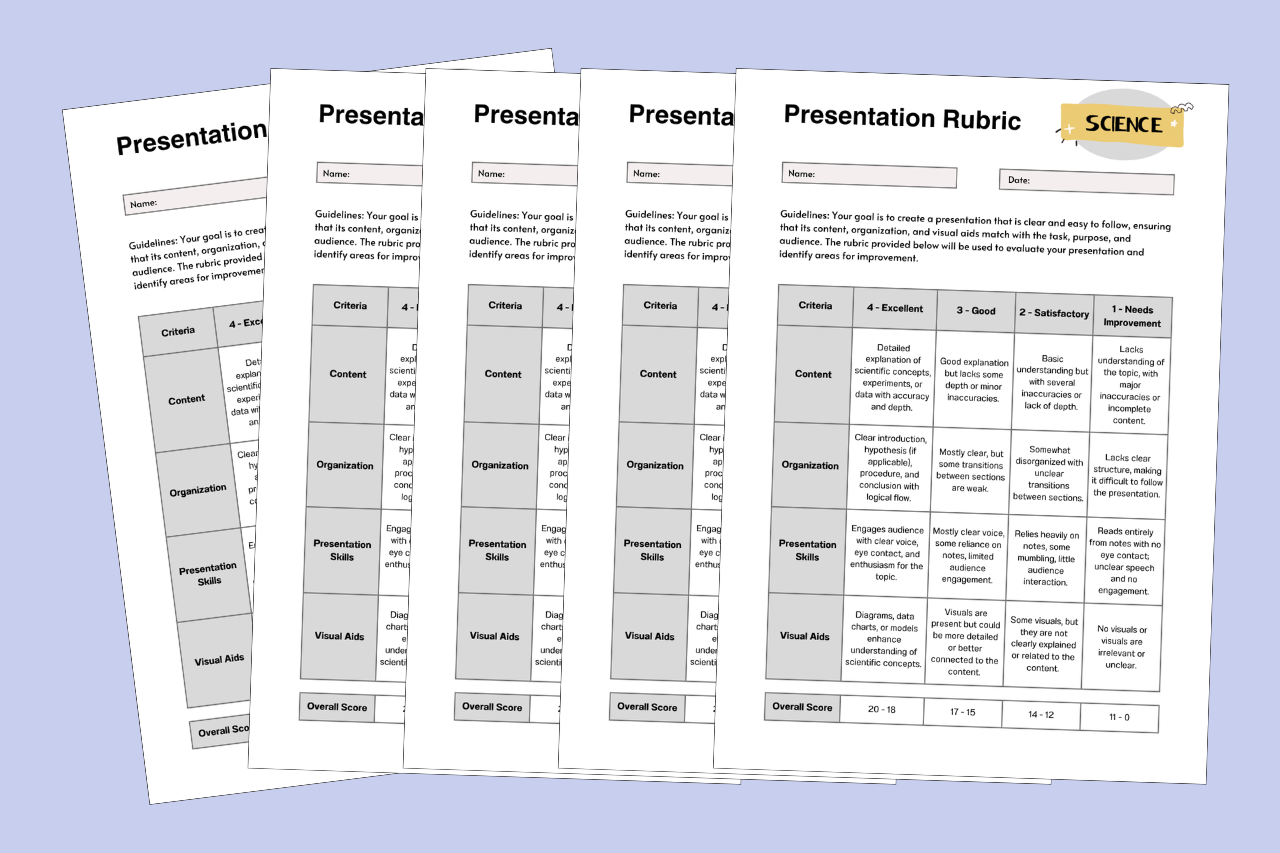
4. Supporting Communication Skills Development
In addition to content knowledge, rubrics assess the communication skills that are vital in science and beyond. A well-rounded rubric considers how effectively a student explains complex scientific ideas and how well they engage with their audience. This is particularly valuable in the homeschool setting, where developing strong communication skills is a key goal.

For example, a science presentation rubric might evaluate whether a student is speaking clearly, maintaining eye contact, and using body language to emphasize key points. By assessing both the content and delivery, the rubric encourages homeschool students to focus not only on what they are saying but also on how they are saying it—building essential public speaking and communication skills in the process.
5. Facilitating Fair and Objective Assessment
One of the biggest challenges for homeschool parents is maintaining objectivity in grading. It’s easy to be swayed by effort or creativity, but presentation rubrics provide a structured, impartial way to assess performance. Each category in the rubric—such as content accuracy, visuals, organization, and delivery—can be scored independently, ensuring a fair and balanced evaluation.

For instance, if a student’s delivery is strong but the content lacks depth, the rubric reflects this by assigning lower marks in the content section while rewarding communication efforts. This balance creates a more objective grading process, making it easier for homeschool parents to assess their child’s performance consistently.
6. Providing Constructive, Targeted Feedback
Feedback is an essential part of the learning process, and rubrics allow homeschool educators to provide constructive and targeted feedback. After a science presentation, students can review the rubric to see exactly where they excelled and where they can improve.
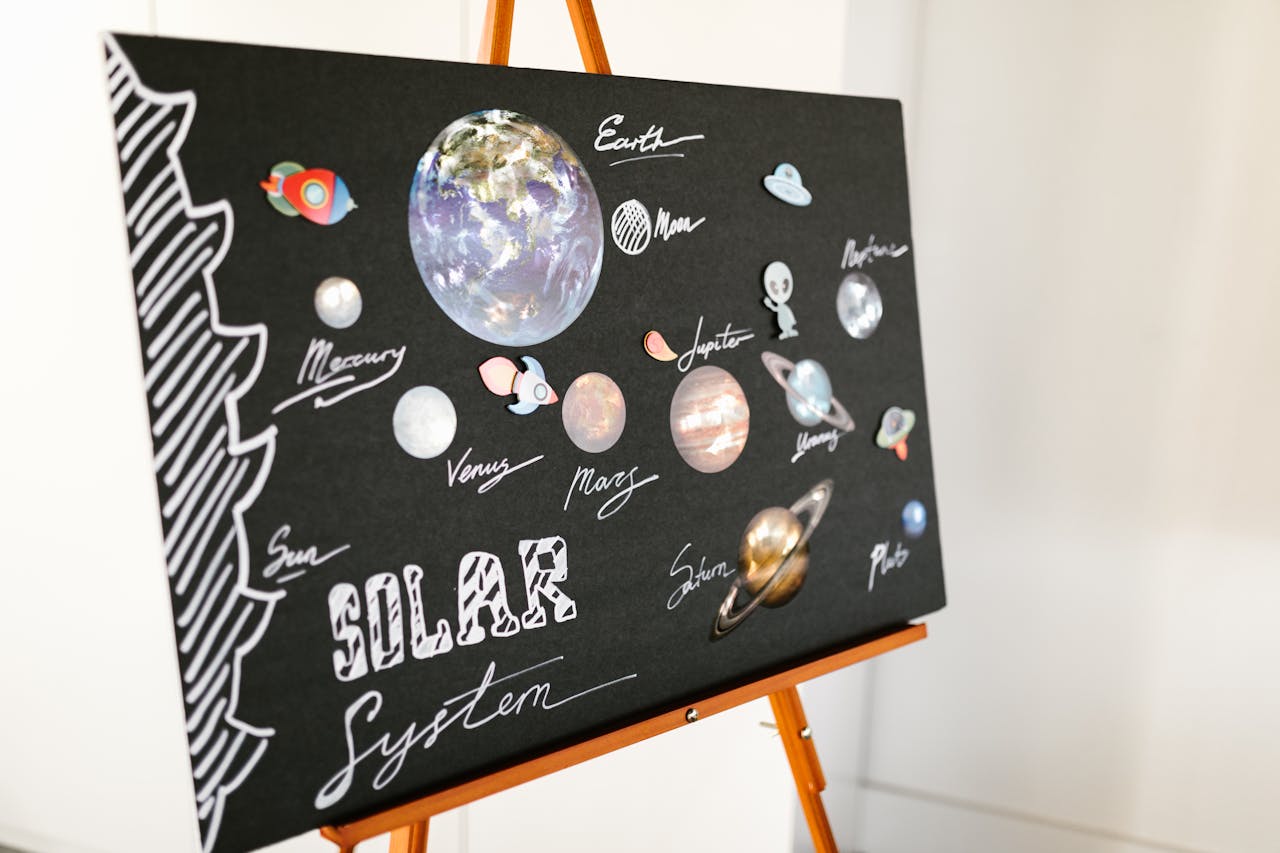
For example, after a presentation on climate change, a student might receive feedback on their ability to explain the greenhouse effect but learn that they need to use more relevant data to support their conclusions. This specific, actionable feedback helps students understand their strengths and weaknesses, enabling them to improve on future presentations and projects.
7. Fostering Engagement and Active Learning
Presentations are a highly engaging form of assessment, allowing homeschool students to actively demonstrate their understanding. Using a rubric ensures that this engagement is structured and purposeful. When students know they will be evaluated on specific criteria, such as creativity in visual aids or the depth of their scientific analysis, they are more likely to invest time and effort into creating a presentation that is both informative and engaging.
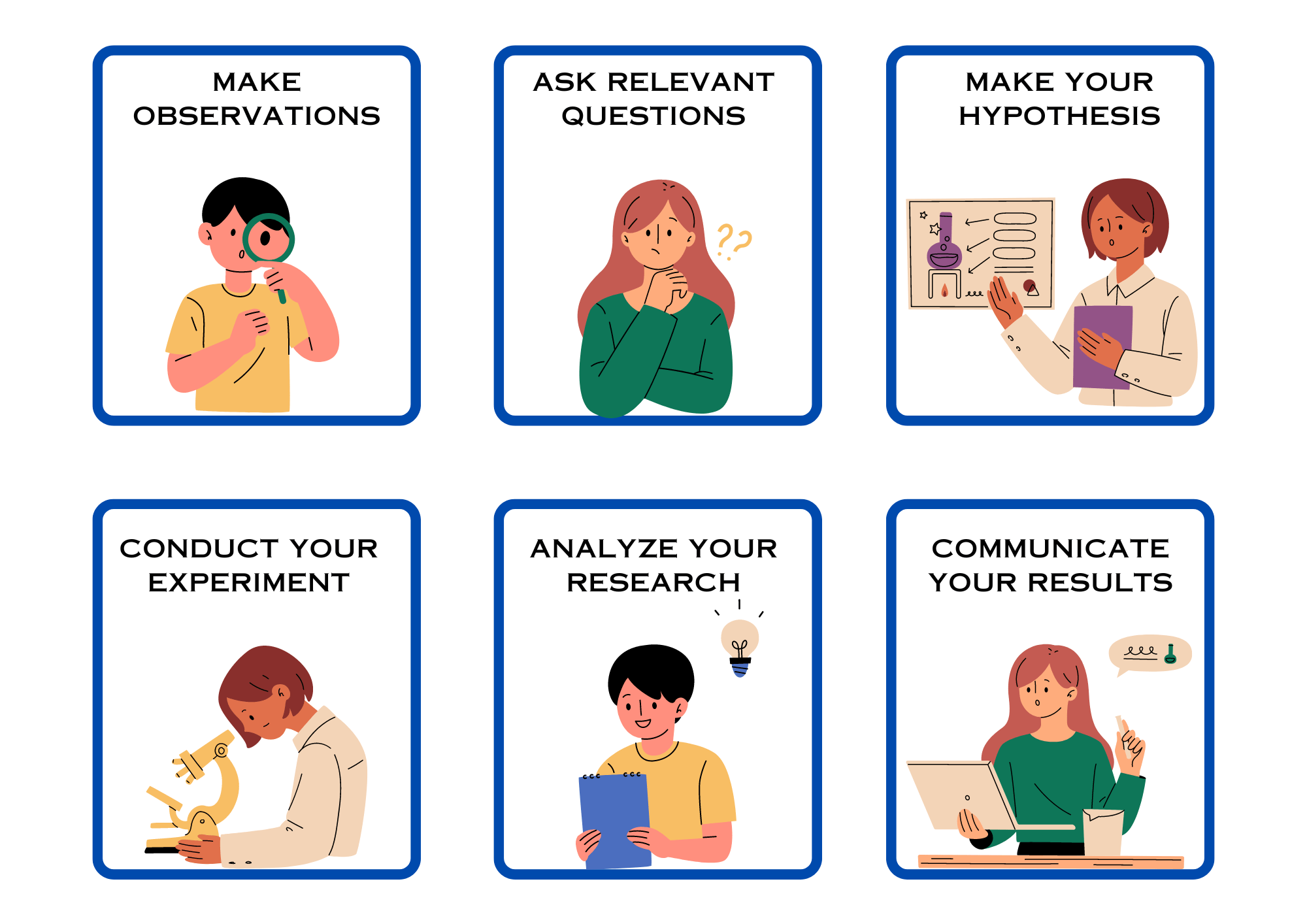
For instance, if the rubric rewards creativity and critical thinking, students might design unique models to explain the steps to the scientific method. This structured engagement encourages active learning, as students must not only understand scientific concepts but also think critically about how to present them in an engaging way.
Final Thoughts…
Using presentation style science rubrics in the homeschool science classroom offers numerous benefits. They provide clarity and structure, ensuring that students understand exactly what is expected of them. Rubrics promote independence and content mastery, helping students assess their own performance and develop critical thinking skills. They also support the development of communication abilities, offering homeschoolers the chance to grow as both scientists and effective speakers.

With rubrics, homeschool parents can offer objective assessments, provide valuable feedback, and encourage their students to engage with science in a meaningful, active way. By incorporating rubrics into your homeschooling routine, you can enhance your child’s learning experience and ensure that they gain the scientific understanding, communication skills, and confidence they need to succeed.
Join Us
Join our growing community of homeschooling parents looking for ready and easy to use learning resources for their homeschool classroom.
Related Topics
- Science Worksheets and Resources in Canva
- Science Teaching Resources
- Teaching the Scientific Method in the Homeschool Classroom
- How To Motivate Learning at Home
- 6 Engaging Science Resources for Homeschooling Curriculums
Share Your Thoughts!
We would like to hear from you! How do you think presentation rubrics should be seen in the science classroom? Let us know in the comments below!




